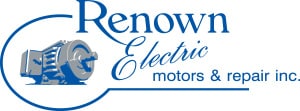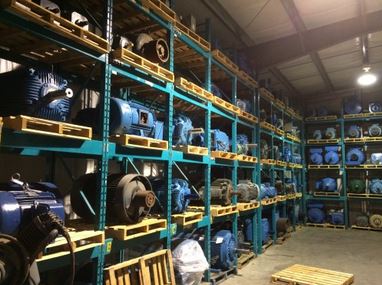Proper Steps for Storing Electric Motors
Comments Off on Proper Steps for Storing Electric MotorsFill in the blank:
The only thing worse than having an electric motor fail, is having the backup motor fail due to improper _______.
If you guessed the word is “storage,” congratulations—you’re a winner. (OK, you didn’t win anything, but you are very intelligent.)
An improperly stored electric motor can cause all kinds of problems. Starting with the motor’s exterior, you will likely notice corrosion from moisture and/or problems of fretting corrosion on the rotors. There are a number of other issues that can arise from poor storage practices; fortunately all can be overcome if the correct precautions are taken.
Here are some points to consider in regard to electric motor storage:
- Always store motors indoors in a clean, dry, and vibration-free environment. Preferably in a cabinet or closed storage area that is free of insects and airborne debris.
- Always remember to pack the bearing cavities with grease for added protection from moisture.
- Don’t leave the motor surface exposed to the atmosphere even if it meets the specifications mentioned for storage. Apply a rust inhibitor to the exposed surface and reapply the inhibitor occasionally while in storage. Yes, the motor will require cleaning prior to use. However, compared to replacing the motor or being left without a backup, it’s a small price to pay.
- Always store electric motors vertically, if this is not possible, rotate motors quarterly. This avoids creating a small dent in the bearing’s outer race due to the excess weight of the rotor and shaft assembly. This may not seem significant, but it will show up once the motor is placed in service as noise and appear in the vibration signature.
- With your bearings packed in grease, you’re set to go, right? Well, no. Periodically turning over both sealed and shielded bearings prevent the grease from settling on one side, which will cause problems later if allowed to happen.
- The insulation in the windings can degrade while in storage if the windings temperature falls below 10° F to 20° F above the ambient temperature. Portable heaters or humidifiers may be required.Take a baseline insulation resistance (IR) measurement prior to storage (followed by a second measurement before the motor is placed in service). Another baseline measurement, the polarization index of the form coil windings prior to storage (annually, if motor is in storage for several years) also is suggested.
- Carbon brushes in some electric motors may experience problems with chemical reaction during storage unless you do the following. Lift the brushes from the commutator and/or slip rings. You should also place the bushes in a relaxed position if possible to prevent against the springs from getting weak.
Use these long-term storage suggestions on your electric motors and you won’t need worry if it works when the time comes to place it in service. Learn more about electric motor maintenance with our free eBook, Preventative vs. Predictive Motor Maintenance.
You can also contact a Renown representative today







